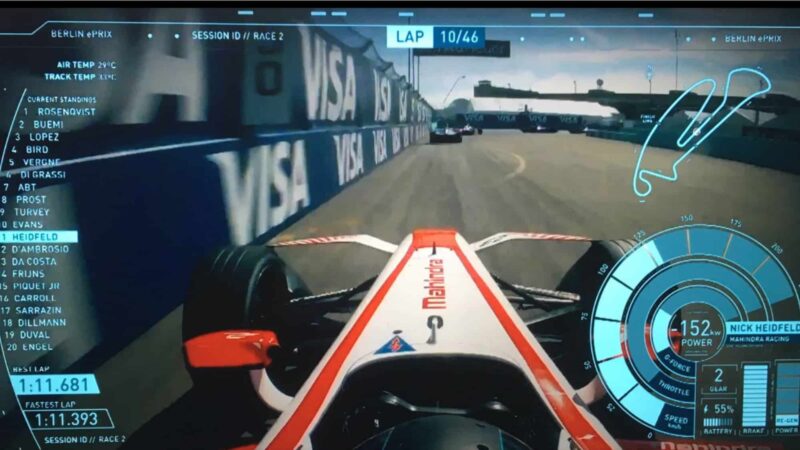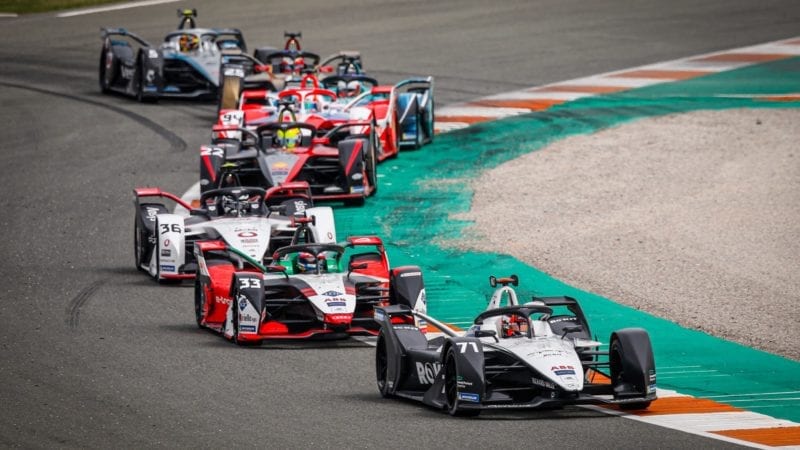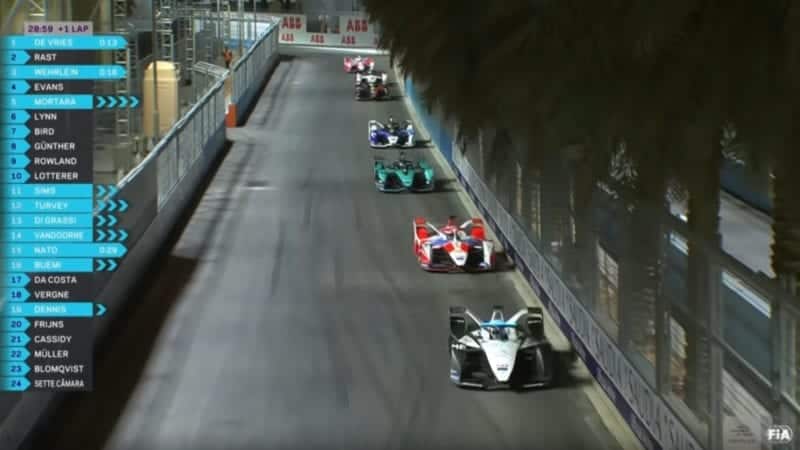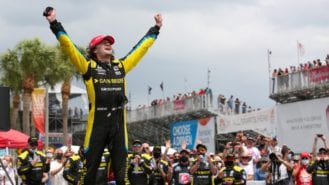Undoubtedly, the series will be considering how it can simplify the spectacle, but this needs to include the full viewing experience.
Commentators can shout “Nick De Vries might be going for an overtake” but if you aren’t a seasoned fan or watching with a spotters guide in hand, which grey car is that?
You may well look to the left side of your screen where driver positions are listed in the ‘timing tower’, but it’s pitiful when it comes to explaining the very basics of what’s going on and for a casual fan, that initial learning curve is still too steep.
Full names are listed on the timing tower, but it doesn’t link the names to the cars and it doesn’t always match the three-letter abbreviations used on the cars and to identify team radio transmissions: so it’s left to you to work out that “GUE” relates to the driver listed as “Günther” on the left.
It’s not always useful to compare Formula E with Formula 1 but the latter’s clear, colour co-ordinated nameplates put the electric series to shame. And as Formula 2 and 3 are afforded the F1 treatment when it comes to TV graphics, it’s easier to identify F3 cars on first viewing than those in Formula E.

A busy but unique take on an on-board HUD from 2017
Nick Heidfeld/Facebook
The series already has a template, each major manufacturer has ample space awarded to show off its logos and title sponsors in the post-race results pages. And the 2021 grid is far more colourful than years gone by. Sure there might be two or three green cars but there is plenty about each team that’s distinctive enough to pick a single colour and use it to identify them across the product.
Formula E’s current identity was crafted back in 2018 by ‘business transformation consultants’ Prophet. It was aimed at delivering a product that was more appealing to a younger audience and one seen as more relevant.
Part of that rebranding was so it could move away from Formula 1 and carve out its own signature look but it can’t hurt to take a page out of the FOM playbook and inform the audience which car is which and assign each team its own unique on-screen identity across the product.
Where the series has been creative with how it goes about things on the track, it continues to miss big opportunities to push on beyond what other racing series do with their presentation. It hasn’t shied away from thinking a little outside of the box every now and again either.
The overloaded Terminator-esque heads-up display has quietly been put to one side but innovation like that could help capture the attention of a wider audience Formula E is taking for granted right now.
Getting influencers to endorse the racing, take part in watch-alongs and post on social media about it is all well and good, but how about a helping hand for those trying to follow along at home and get invested?



